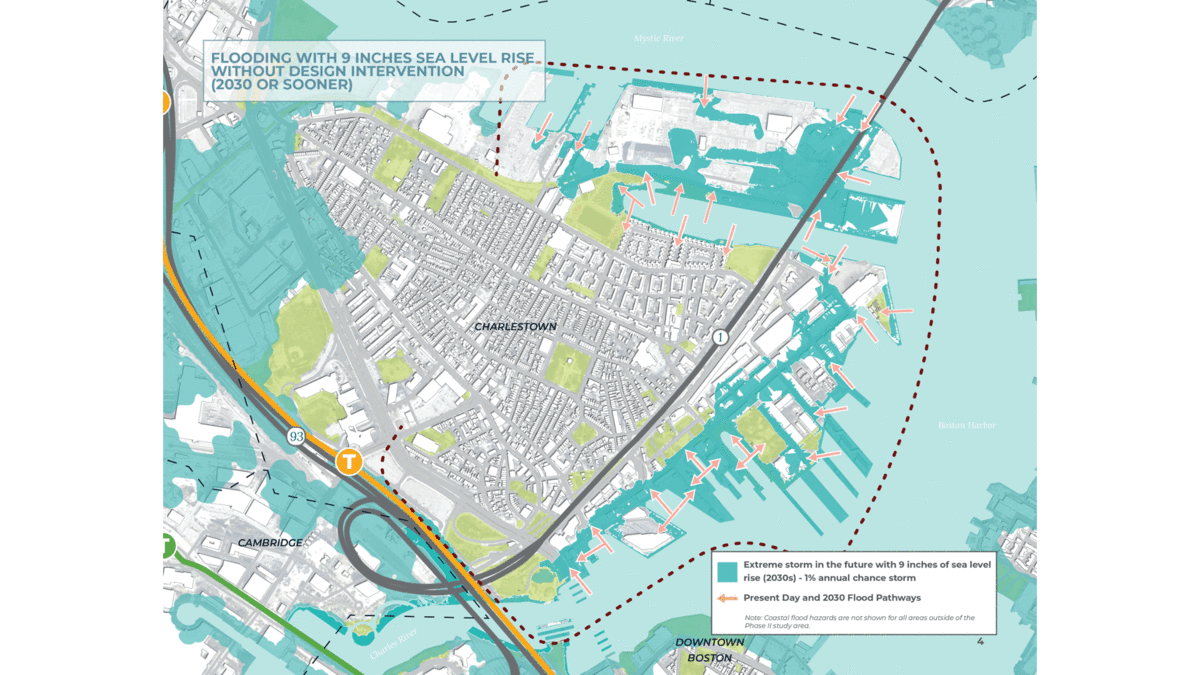
NPS Photo/M. Woods IntroductionBoston is a historic city, and the land on which it sits has an even longer story. What will climate change mean for its future? Humans have lived on the Shawmut Peninsula, now called Boston, for thousands of years. Members of the Massachusett Tribe lived here throughout the seasons, canoeing out to the islands during the summer months and spending fall and winter in the forests and along the coast. Three great hills dotted the peninsula, and a network of wetlands and estuaries lined the coast. The peninsula changed rapidly when white European settlers arrived and colonized the land. Forests were cleared, and eventually the three hills were almost cut down, and the soil used to fill in the marshes and many waterways. In the 1800s, the area now called Boston almost doubled in size, as the coast was filled in. As the human population and the city itself grew, Boston became a hub of political movements and dissent, from the American Revolution to the abolitionist movement. The city also supported military operations of the United States, including the Siege of Boston during the Revolutionary War, the War of 1812, the Civil War, and World War II. Boston has a reputation for long, cold winters, spectacular falls, and short but pleasant springs and summers. Now, climate change has shifted Boston’s climate to one more like the Mid-Atlantic: mild, dry winters and hot summers with extreme variations in rainfall. Not only will Boston landmarks, including Freedom Trail sites and the Charlestown Navy Yard, be more challenging to visit during more frequent heat waves, but also historic landmarks, such as Faneuil Hall or even the historic WWII destroyer USS Cassin Young (DD-793) will have to adapt for extreme weather events that did not exist in the past. 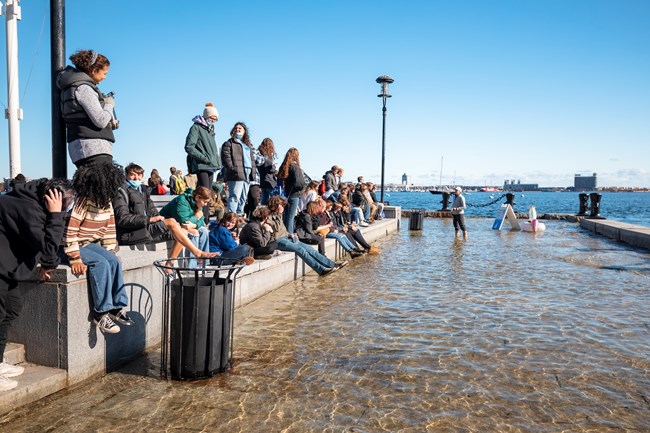
Boston Harbor Now ThreatsCoastal FloodingWhen colonists built Boston and its harbor, they built it only a few feet above the typical high tide. These tides vary in height depending on the cycle and orbit of the moon. A typical high tide might be nine feet, though regular "king tides" can be over eleven feet. As climate change drives the melting of Earth’s ice caps, the world’s oceans are rising. Boston is no longer high enough to stay dry during high tides, even in calm weather. Sea level rise, coupled with stronger storms, means that we expect regular flooding of piers, downtown streets, and even public transit stops. StormwaterWarmer air current and ocean temperatures caused by climate change are also affecting storms around Boston. As the climate shifts, we can expect to see larger storms delivering more rainfall in a short amount of time to our city. These rapid and powerful storms overwhelm Boston’s storm drains, causing flash-flooding and impacting the city-wide sewer system. This results in more pollution in our waterways, underground flooding, and erosion. Urban Heat Island EffectUrban areas, such as town centers and cities, are covered in asphalt, pavement, and cement – dark surfaces that absorb the sun’s warmth. These areas heat up faster and stay hot longer than greener and less developed areas. Researchers call this the "urban heat island effect." As the climate warms and cities grow, this effect is intensifying. In summer months, this effect can become dangerous to human health, particularly in underserved communities that have far less natural space than wealthier communities. A 2021 heat resilience study conducted by the City of Boston showed that historically underserved areas of the city can be over 15 degrees hotter than well-resourced communities during a heat wave. Understanding Boston as an Urban Heat Island 

Left image
Right image
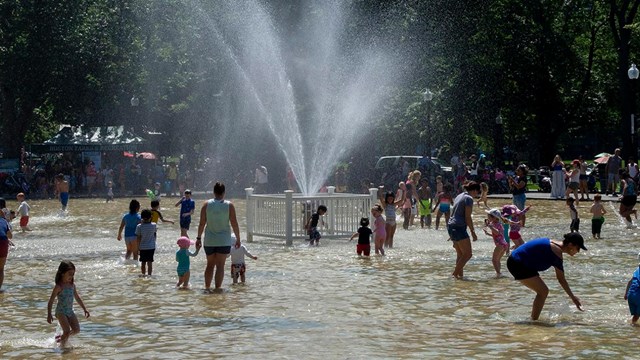
Preparing for Heat
The City of Boston's Heat Plan identifies strategies to address future impacts of extreme heat and increase citywide resilience. 
Keeping Cool in the Heat
Check out the City of Boston's resources for staying cool in extreme heat. 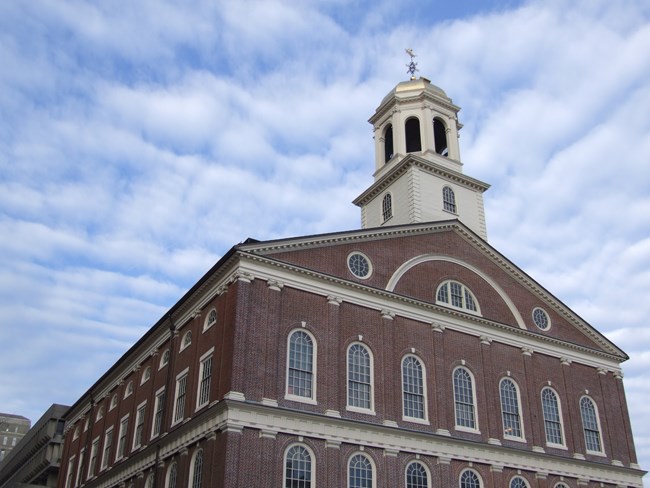
NPS Photo MobilizationThe threats posed by climate change can feel overwhelming and impossible to overcome; however, Boston has long been a place where individuals have come together in collective action for a cause. From the hundreds of civilians protesting the Stamp Act of 1765 at Faneuil Hall, to the 50,000 women and men working at the Charlestown Navy Yard during World War II, Boston has long offered a stage to changemakers. » What lessons can today’s Bostonians learn from community mobilization of the past, and how might we apply them to the present challenges of climate change? Inspired by a deep-rooted understanding of justice, Bostonians from the past came together in huge numbers to create change. They saw the power of organizing and collective action in addressing the issues they confronted. Climate change is the greatest challenge many of us have faced in our lifetimes. By looking into Boston’s past, we can find a way forward to a future that is healthy and sustainable for all. Unite in Common CauseBoston has long been a city of diversity: culturally, racially, socio-economically, industrially, and more. Even as new people flowed into the area, common causes brought residents together in times of crisis. In the Revolutionary era, Bostonians gathered in town meetings to determine how to respond to tyranny and oppression. In successive revolutions, Bostonians took to the streets to protest slavery and, later, for women's right to vote. When the threat of a second world war grew near, women, immigrants, African Americans, and differently-abled people flocked to the Charlestown Navy Yard, willing to serve in the home front. » How can we celebrate our differences while uniting for a common cause? 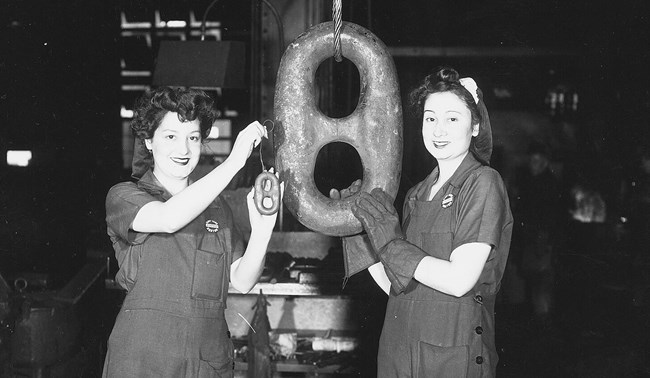
BOSTS_9669-3, Boston National Historical Park Teach and Learn Critical SkillsNew challenges require us to learn new skills, and Boston has long been a hub of traditional knowledge and innovation. To fish in the tumultuous waters of the harbor and ocean, the Massachusett Tribe built huge dugouts called mishoons by hollowing out trees through continuous burning. With the advent of the Charlestown Navy Yard, local workers learned the art of ropemaking, welding, and ship making. Workers in the growing city literally reshaped and engineered the land itself, cutting down hills to create new land to be built upon. Now, researchers and staff are discovering and learning ways to engineer Boston for climate change, identifying the broad range of skills our young people will need to thrive in a changing future. » What skills will future residents of Boston need to thrive in a changing climate? Create Community SpacesFrom time immemorial to the American Revolution and beyond, Bostonians have created spaces of community making and fellowship. Houses of worship such as Old South Meeting House and Christ Church (Old North Church), the grounds of the Bunker Hill Monument, and Faneuil Hall all provided space for residents to come together and share ideas. » How can we create and protect collaborative spaces to build and connect communities? ResourcesLearn what NPS, the City of Boston, and park partners are doing to become more climate resilient. 
BOST Climate Futures Summary
Read the NPS Climate Change Response Program's report on observed climate changes and plausible climate futures for our park. 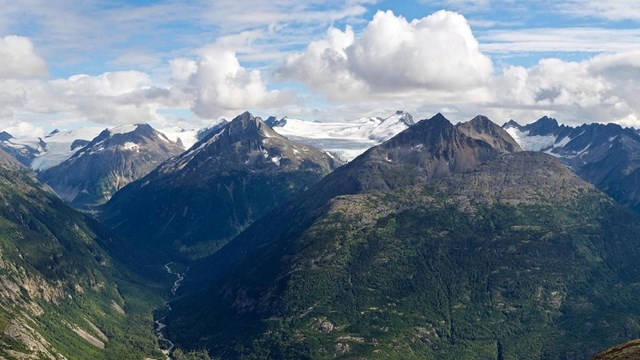
National Park Service & Climate Change
The National Park Service is addressing challenges brought on by climate change through a comprehensive strategy. 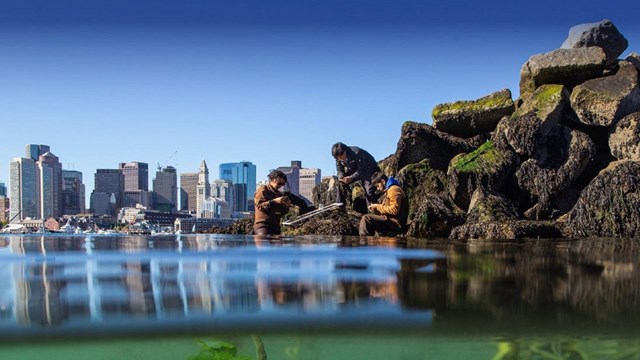
Stone Living Lab
The Stone Living Lab conducts transformative research and outreach to make vulnerable coastal regions adaptive to climate change. 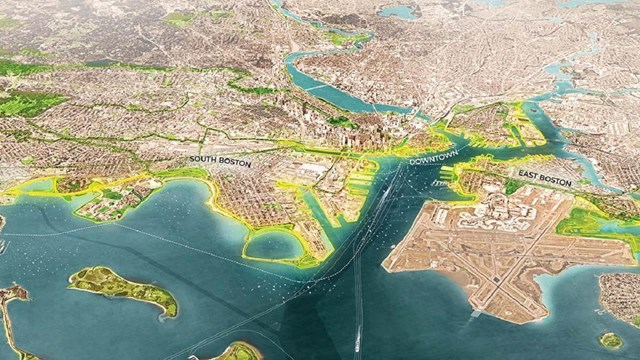
Climate Ready Boston
Climate Ready Boston is the City's initiative to prepare for the impacts of climate change. 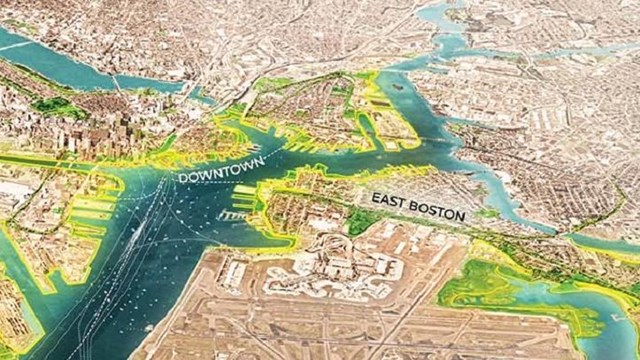
Climate Ready Charlestown
Read how the City of Boston is taking steps to address climate change vulnerabilities in Charlestown. |
Last updated: September 24, 2025

